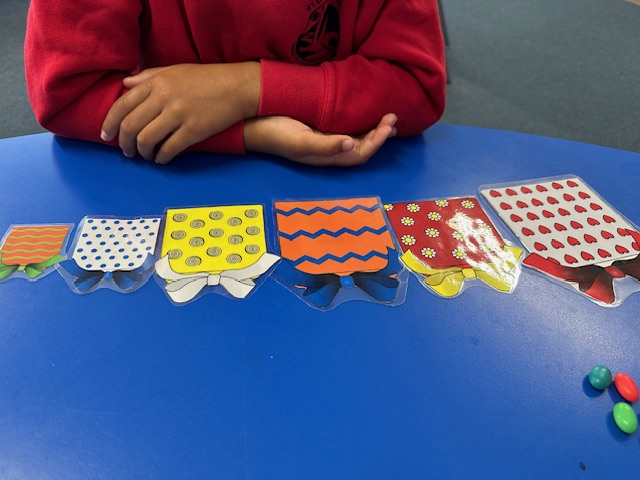The children quickly adapted to the explicit and systematic teaching of all the components. They were able to practice what was taught, gain immediate feedback when they make errors and see improvements in decoding which meant an improvement in fluency. The transferring of knowledge is especially noticeable in their writing. They enjoy trying out new vocabulary that was introduced in the oral narrative component and using it in both their oral and written sentences.
I was looking at the results of five children in particular. I was interested to see if there had been an increase in their scores from baseline and after 10 weeks of BSLA teaching. Some of the children had been on the programme for more than ten weeks and had a second progress check while others were only assessed at baseline and progress one check and therefore show no results for progress two.
The results show a steady increase in all three aspects of initial phoneme identity, letter sound recognition and phoneme blending. For these children any increase, however small, was something to celebrate. Reading did not come easy to them and it was important to try and pinpoint where extra attention could help them.
While Child D may have been proficient at identifying identifying initial letters, it was identifying sounds and blending them together that was a problem for them at baseline testing but after 10 weeks the child was able to show a marked increase in efficiency at all tasks.
Child A has made good gains and is now showing proficiency in initial phoneme identification and letter sound recognition. This child has an understanding of how to blend letter sounds and with more practice, I think they should show a greater proficiency.
From the results, while Child B and E showed similar results for initial phoneme identity, Child E was stronger in blending tasks. Again this pinpoints next step in teaching for Child B.
In baseline tests Child C had some knowledge of initial phonemes but needed to work on how to recognise letter sounds and blend them. After 10 weeks, although there had been some progress, they still needed to work on this area. After a second progress check they were showing some proficiency.
When looking at the reading and writing data, the results have shown an improvement in both areas. In writing one can see some reluctant writers are beginning to write a simple sentence with minimal support by sounding out CVC words. This is very encouraging to see that they can use the knowledge they have learnt in reading and transfer that knowledge to writing. Even more proficient writers are trying out new vocabulary.
Looking at the BSLA programme as a whole, the children were able to participate at their own level. The games helped reinforce the words introduced that week and Bingo became a firm favourite. The CVC words were easy to decode which meant most of the children were able to participate with a good degree of achievement. When being Word Wizards the children were attempting to use their spelling knowledge - such as “cute has the “u” sound so it needs an e at the end of the word” or saying "moon has a long o sound so it has two o’s". Chain manipulations is another favourite aspects of the daily lesson. The children who find writing difficult still try hard while those who find the task easier are getting to be faster and more fluent writers.
Some changes in teaching were not such a big leap forward. The children are familiar with many of the Maori phrases and kupu as they were already used in the class. The “turn and talk technique” where a partner has to repeat what was said to them is already used to help foster oral language and listening. It is helpful for those who find whole class discussions overwhelming. Reading aloud quality children's books and elaborating on words was already a familiar part of our class routine which the children enjoyed.
Having a large part of the programme devoted to whole class learning has meant reinforcing conversational rules - giving others wait time and respecting other children’s turn. It is not something the class is very good at, especially in the excitement of the moment, but over the weeks it has improved.
I have very supportive colleagues who have been able to answer most of my questions but it is not something that is learnt in a few sessions. It is time consuming to organise the materials each day, to be thoroughly familiar with what is to be taught and to set up each lesson to be able to teach it as planned. Testing is also another aspect which takes time. It is not something which can be done within a busy classroom as it needs to be done in a quiet space so children can listen to the sounds and respond appropriately. But over the weeks I became more familiar with the routines.
I have enjoyed using a programme in which the lesson plans are based on scientific research, there is a specific sequence for introducing the children to letters and sounds, it has a New Zealand context and monitors children’s achievement. The assessment can pinpoint precisely where a child is having problems and it seems to be just as effective with the high flyers as with struggling learners.
There is a lot to learn in a short space of time. Sometimes it seems challenging and overwhelming but with a positive mindset, and having data to see progress and to help make decisions as to next steps, it is not so daunting.














